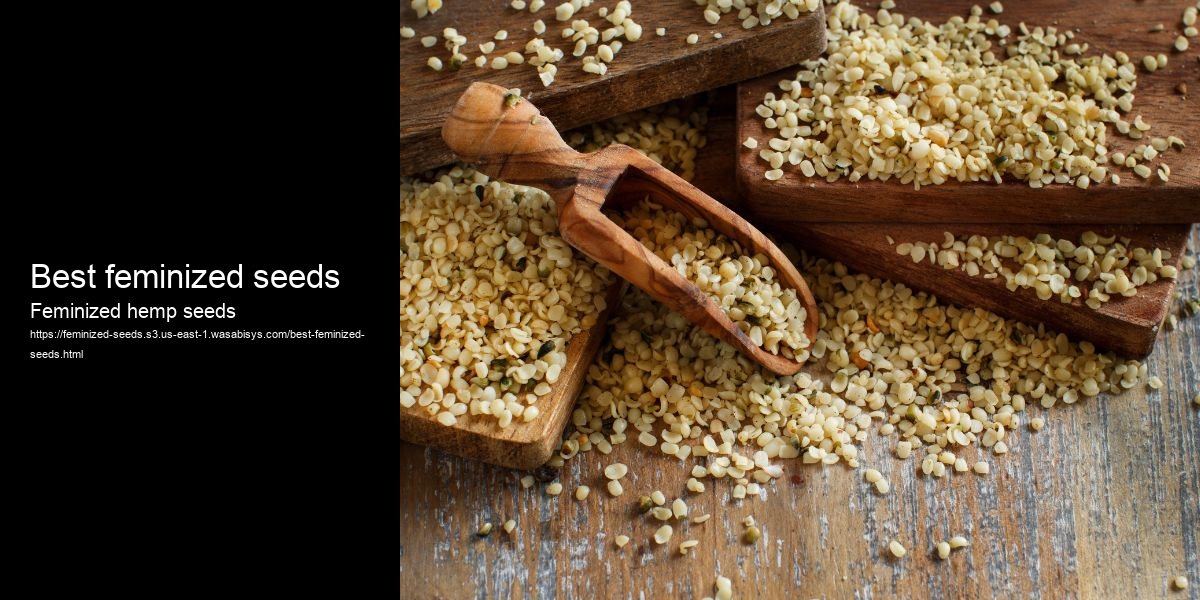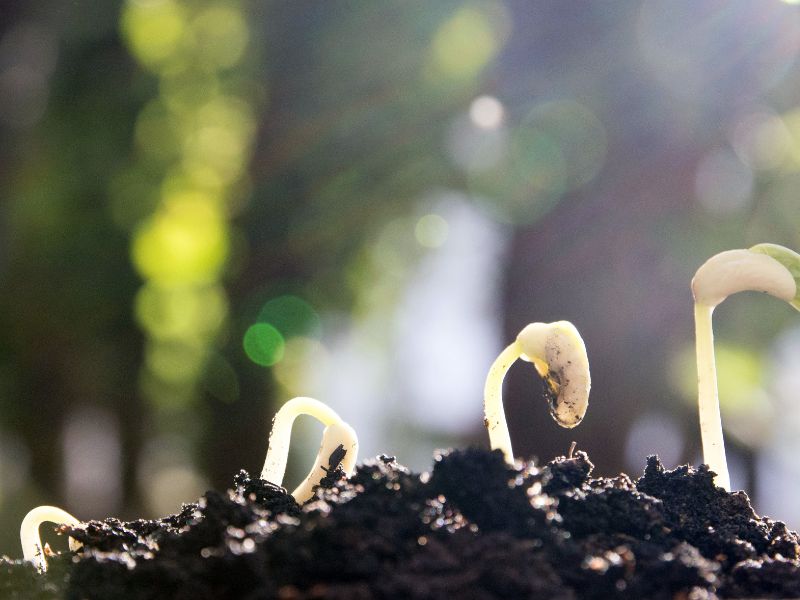
In addition to the risk of genetic variability, bagseeds may also carry pathogens or diseases that can harm your cannabis plant. This is especially true if the bagseeds were found in cannabis that was not grown in a controlled, sterile environment.
For these reasons, many experienced growers recommend against using bagseeds to start a cannabis grow. Instead, they recommend purchasing high-quality, feminized seeds from a reputable seed bank in order to ensure consistent, reliable results. Feminized seeds are specifically bred to produce only female plants, which are the ones that produce the resinous buds that are harvested for consumption. By using feminized seeds, growers can eliminate the need to identify and remove male plants, which can be time-consuming and labor-intensive.
Overall, while it is possible to grow cannabis from bagseeds, it is often a risky proposition that may not result in high-quality buds or a healthy plant. For the best results, it is recommended to start with high-quality feminized seeds from a trusted seed bank.
When deciding whether to grow a bagseed, there are a few factors to consider. Firstly, it is important to assess the quality of the cannabis from which the seed was found. If the original cannabis was of high quality and produced desirable effects, there is a greater chance that the bagseed will also be of high quality. On the other hand, if the original cannabis was of low quality or produced negative effects, it may not be worth the effort to grow the bagseed.
Secondly, it is important to consider the growing conditions in which the bagseed was produced. If the cannabis from which the seed was found was grown in an uncontrolled or suboptimal environment, the bagseed may be more prone to disease or other issues. It is also important to consider the genetics of the original plant, as genetic instability can result in unpredictable or undesirable traits in the bagseed.
Overall, while bagseeds can be a fun and adventurous way to start a cannabis grow, they do come with some inherent risks and uncertainties. If you do decide to grow a bagseed, it is important to manage your expectations and be prepared for the possibility that the resulting plant may not be of high quality or may produce undesirable effects. However, with some luck and careful cultivation, a bagseed could potentially lead to the discovery of a new and exciting cannabis strain.
Growing cannabis requires a significant amount of commitment and resources, so it is important to ensure that you are able to dedicate the necessary time and effort to the process before attempting to grow a bagseed. In order for a seed to be viable, it must be mature enough to have a fully-formed genetic plan and a strong enough shell to withstand germination and develop a taproot.
There are several indicators that can help determine whether a bagseed is worth germinating. A seed with tiger stripes, or dark stripes on its shell resembling veins on a leaf, is typically a good sign. A seed with a solid shell that can withstand some pressure when pinched between your fingers is also a good sign. Immature seeds, which are typically light in color and have a soft exterior shell, are usually not viable and should be avoided.
Even if a bagseed looks decent, it may still be weak and take longer to develop or display other undesirable traits. Growers typically discard weak plants to free up space, so it is important to manage your expectations when growing bagseeds. If the seed has been physically damaged or mishandled, it may not be worth the effort to try and germinate it.

It is important to note that the legality of purchasing marijuana seeds varies from country to country, and even within states or provinces in countries where it is legal. In some areas, it may be legal to purchase seeds for personal use, while in others it may only be legal to purchase seeds if you have a license to grow marijuana for medicinal purposes.
For those in areas where it is legal to purchase seeds, there are a variety of options available. Many online seed banks exist that offer a wide selection of strains, including both feminized and autoflowering seeds. These seed banks often provide detailed information about each strain, including its genetics, effects, and potential medical benefits.
It is important to do your research and choose a reputable seed bank that offers high-quality seeds. Look for seed banks with good customer reviews and a strong track record of delivering seeds that germinate and grow into healthy plants.
In addition to online seed banks, some dispensaries may also sell seeds. However, availability may be limited and prices may be higher than what you would find online.
Ultimately, whether you choose to purchase seeds or grow from bagseeds, growing cannabis can be a rewarding and fulfilling experience. With the right care and attention, you can produce high-quality buds that are perfect for your individual needs and preferences.

The sexual organs of the cannabis plant are located on its nodes, which are the places at which branches break off from the parent stalk. When the males are fully mature, they will have round balls on their heads, which will develop into pollen sacs and release pollen into the air. feminized marijauna seeds. Women will have round bodies and lengthy hair in this future society.These hairs will eventually develop into pistils, which are responsible for capturing pollen from the surrounding air. However, if you use a magnifying glass, you will be able to get a much better look at the pre-flowers, which at first can be extremely little and difficult to relate to with the human eye. (brazzo/i, Stock) Finding a marijuana seed in your stash is a terrible experience, but most of us have been there at one point or another in our lives.
What Exactly Are the Feminized Seeds?
You might notice one when you're grinding up some flower, or you might see one pop, spark, and crackle from the heat of a heated bowl. In some circumstances, you'll see one of these. These are known as "bagseeds," and whether or not you are able to cultivate one depends on the origin of the bagseed. There are many possible causes for the development of seeds in cannabis buds after they have been processed. During the process of growing, for example, a blossoming female plant could have been inadvertently pollinated by a male plant that was present. But more often than not, they are an indication of stress, which can be connected to high temperatures during the latter stages of blooming or an inflated surge in environment or environment (what are feminized seeds?).
In general, stress and inherited conditions are considered to be detrimental, so it is best to have realistic expectations for any plant that you start from a bagseed (feminized marijuana seeds). However, if you're lucky, you might find a seed that's already fully grown inside of a very delicious herb. Without daring cigarette users planting and propagating the seeds they discovered in a bag of nice bud, stress on the same scale as that experienced by the famous would not be feasible. Therefore, you shouldn't disregard the bud only because it may contain one or two seeds. Even while it has several flaws, it has the potential to become the foundation of the next great weed pressure. You should ask yourself a few questions to determine whether or not it is worth your time and effort to cultivate the seed.
Growing cannabis requires a significant amount of time, effort, and money; therefore, you should ensure that you have these resources available before beginning the process. In order for a seed to have any chance of developing into a plant, it needs to be old enough to have a totally completed genetic blueprint, and it also needs to be robust enough to germinate, break through its protective covering, and start growing its essential taproot. There are a few signs that can be looked for in order to have an idea of whether or not the seed need to be germinated. Tiger stripesUsually, excellent characteristics include dark stripes on the seed that resemble veins on a leaf. When pinched between your fingers, solid shella seed should be able to hold up to some pressure without breaking or collapsing; if it does either of these things, it's not very good. Immature seeds typically have a pale appearance and a pliable husk on the outside of the seed.
However, the majority of the time these are incredibly fragile, require a significant amount of time to mature, and disclose other unpleasant qualities. Growers usually get rid of plants that aren't doing well to make more room. There is also a possibility that you will find a developed seed that has been physically injured as a result of poor handling, such as rough pruning. If this is the case, then making an effort to germinate the seed is generally not something that should be done. You might also try sprouting the seed you found and seeing what comes up from it if it has a respectable appearance. There is only one way to know for certain whether or not a bagseed will develop, regardless of whether it is viable. You can plant a lot of bagseeds outside and observe what occurs if you are more interested in the process of learning than you are in the final product, which will be feminized pot seeds. If you are simply inquisitive to learn, you will not be as interested in the final product.